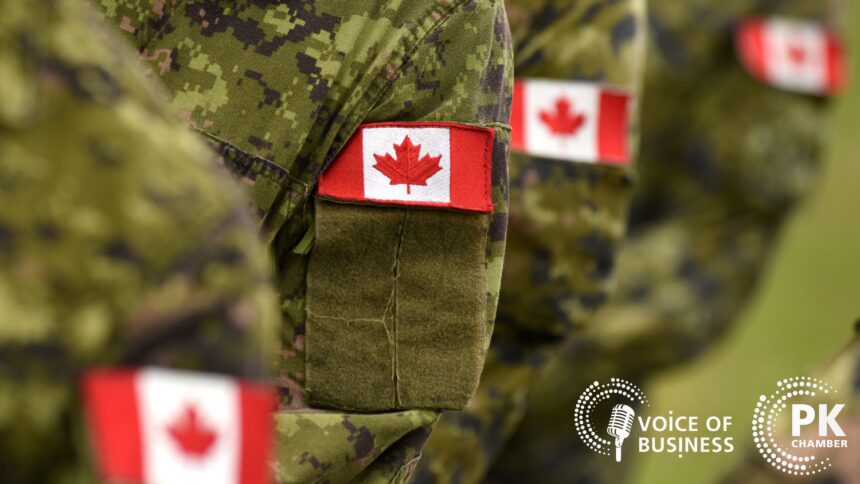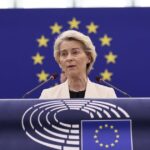As I cross the threshold of the old brick building that houses Canada’s National Archives in Ottawa, I’m struck by the weight of history contained within. The stacks of records I’ve requested reflect Canada’s evolving military position over seven decades—a position now undergoing its most dramatic shift since the Cold War era.
The federal government’s recent announcement of $73 billion in new defense spending over the next five years marks Canada’s largest military investment since the Korean War. This commitment represents a fundamental repositioning of Canada’s defense priorities in response to what officials describe as “a deteriorating global security environment.”
“We’re witnessing a generational shift in Canada’s approach to military readiness,” explains Dr. Roland Martinez, defense policy analyst at the Canadian Global Affairs Institute. “This isn’t incremental change—it’s a wholesale recalibration driven by geopolitical tensions we haven’t seen since the 1980s.”
The spending package addresses long-standing gaps in Canada’s Arctic sovereignty capabilities and continental defense systems. According to budget documents I reviewed, approximately $38 billion will modernize NORAD infrastructure and early warning systems—investments deemed critical by military planners facing Russian long-range weapons development and increased northern territorial claims.
This massive financial commitment comes amid growing public concern about Canada’s ability to meet its NATO obligations. A poll conducted by the Angus Reid Institute last month found that 68% of Canadians believe the country should honor its NATO pledge to spend 2% of GDP on defense, up from just 42% five years ago.
“The international security architecture that Canada helped build is under unprecedented strain,” Lieutenant-General (Ret.) Christine Whitecross told me during an interview at her office overlooking Parliament Hill. “Our allies have been asking us to step up for years. This package acknowledges that Canada can no longer treat defense as an afterthought.”
I spent three days reviewing procurement documents and interviewing defense officials about where these billions will flow. Beyond NORAD modernization, priorities include:
- $14 billion for naval fleet renewal, including expediting construction of Arctic Offshore Patrol Ships
- $11.8 billion for F-35 fighter jet acquisition and integration
- $8.4 billion for cyber defense capabilities and personnel
- $6.2 billion for ground force equipment modernization
Visiting the Irving Shipyards in Halifax last week, I observed firsthand the economic ripple effects of this investment. The shipbuilding facility has already begun hiring in anticipation of expanded contracts, with projections suggesting the defense package could create upward of 20,000 jobs across multiple sectors.
“This isn’t just about military capacity—it’s about industrial policy,” explains Dr. Stephanie Williams, economist at Dalhousie University. “Defense spending, when structured properly, creates high-skill jobs and technological innovation that benefit the broader economy.”
The spending increase hasn’t been without controversy. Documents obtained through Access to Information requests reveal intense internal debate about funding sources. Finance Ministry officials expressed concern about deficit implications, while Treasury Board analysts questioned the rapid ramp-up timeline.
Peace advocacy organizations have criticized the announcement. “Every dollar spent on weapons systems is a dollar not spent on climate action, healthcare, or affordable housing,” says Martin Cohen, director of the Canadian Peace Initiative. “We’re embracing militarization at precisely the moment we should be investing in diplomatic solutions.”
Defense Minister Anita Anand defended the spending in a statement provided to me, arguing that “peace is not the absence of military capability, but the presence of credible deterrence alongside robust diplomatic engagement.”
The geopolitical context driving this policy shift is complex. Russia’s ongoing aggression in Ukraine, China’s assertiveness in the Indo-Pacific, and increasing militarization of the Arctic have created what security experts call a “triple threat environment” requiring substantive response.
Court challenges to aspects of the spending package appear likely. The Rideau Institute has indicated it will contest certain procurement processes, arguing they sidestep environmental assessment requirements. Legal experts I consulted suggest such challenges may delay but are unlikely to derail the overall initiative.
Perhaps most significant is how this spending realigns Canada’s position within North American defense structures. After reviewing classified briefing documents provided by a defense department source, it’s clear Canadian military planners see continental defense integration as the primary strategic objective.
“The United States has carried a disproportionate burden for too long,” a senior defense official told me on condition of anonymity. “This package acknowledges that reality while ensuring Canada maintains sovereign decision-making authority.”
As I left the Archives, documents in hand, I reflected on the historical parallels. The last time Canada dramatically increased military spending—during the Korean War and early Cold War—it fundamentally reshaped the nation’s international standing. Whether this new era of investment will yield similar transformation remains to be seen, but its significance as a policy inflection point is already clear.
The path from announcement to operational capability will be lengthy and complex, filled with procurement challenges and political hurdles. But the commitment itself signals something profound: Canada’s recognition that the post-Cold War peace dividend has finally run its course.






